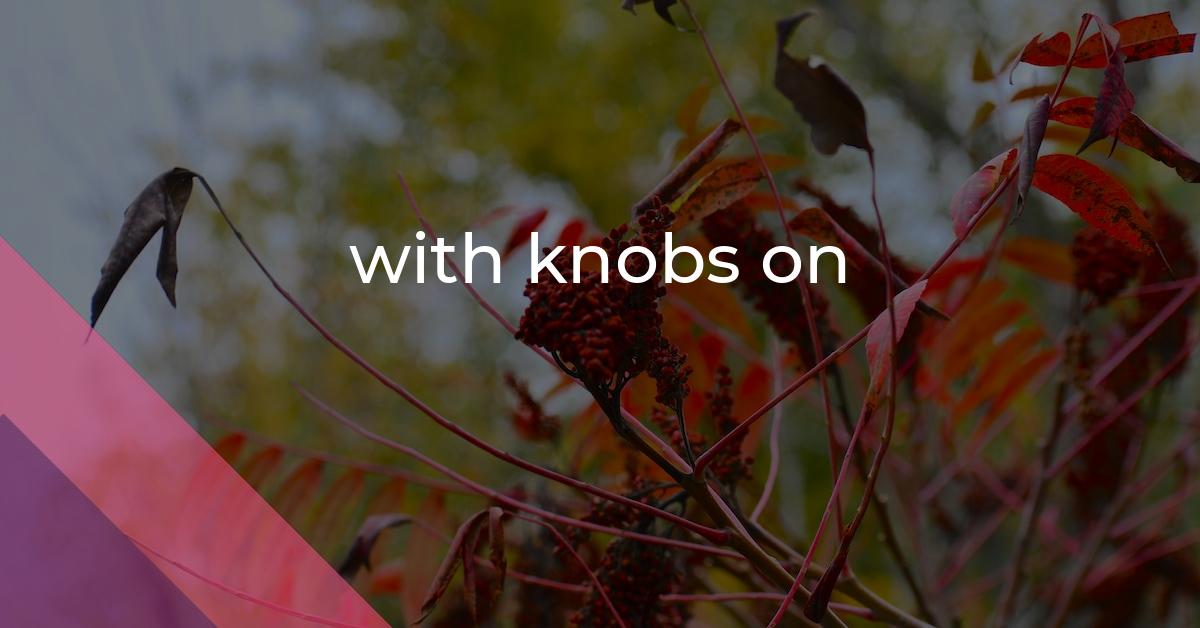with knobs on: Idiom Meaning and Origin
What does ‘with knobs on’ mean?
The idiom "with knobs on" means to have additional or extra features or qualities, often in an exaggerated or excessive way.

Idiom Explorer
The idiom "with bells on" means to eagerly and enthusiastically participate in something or to arrive at a place promptly, often with a sense of excitement or anticipation.
The idiom "up on" means to be knowledgeable or well-informed about a particular subject or topic.
The idiom "turn on" means to switch on or activate something, or to suddenly become angry or hostile towards someone.
The idiom "tuned in" means being aware or paying attention to something. It is often used to describe someone who is fully engaged or focused on a particular subject or situation.
An idiom used to emphasize the extreme or exceptional quality of someone or something.
The idiom "switch on" means to activate or turn on. It is used to describe the action of starting a device or making something operational.
The idiom "put on the dog" means to dress or act in an extremely fancy or extravagant manner, often to show off or impress others.
The idiom "put on frills" means to add unnecessary or excessive decorative details or embellishments to something, typically to make it more attractive or impressive.
The idiom "put a hat on a hat" means to make a situation or an idea unnecessarily complicated or redundant by adding extra layers or elements.
The idiom "on a kick" means to be extremely interested or obsessed with something for a specific period of time.
Origin Discovery: Unveiling the Enigma
The idiom "with knobs on" is an expression commonly used in the English language. It is considered to be a variation of the idiom "with all the bells and whistles" which means to have all of the optional or extra features available. The origins of the idiom "with knobs on" can be traced back to the late 19th century, specifically to the United Kingdom.
The phrase "with knobs on" is used to intensify or emphasize something, usually in a positive or exaggerated manner. It implies that the subject being referred to is not only present, but it has additional characteristics or attributes that make it exceptional or impressive. For example, if someone says they are going to a party "with knobs on", it means they are expecting the event to be particularly enjoyable, exciting, or extravagant.
One possible explanation for the origin of this idiom is its association with the radio and television industry. In the early days of technology, radios and televisions had knobs that were used to adjust the volume, tune in to different frequencies, or select channels. These knobs were seen as additional features that enhanced the functionality and performance of the device. Therefore, when someone said they wanted something "with knobs on", they were expressing their desire for it to have all the desirable features and extras.
Another theory suggests that the idiom may have originated from the practice of adding decorative knobs to furniture or other objects. These knobs would serve as embellishments, making the object more visually appealing and valuable. Therefore, when someone referred to something as being "with knobs on", they were implying that it was not only functional but aesthetically pleasing as well. This association with decorative knobs is similar to the idiom "put on frills", which means to add extra adornments to something.
Over time, the idiom has evolved to encompass a broader range of meanings. It is no longer limited to physical objects but can also be used metaphorically to describe a person, an event, or a situation. Its usage can be both literal and figurative, allowing for a degree of flexibility in its interpretation.
The idiom "with knobs on" originated in the late 19th century and is commonly used in English-speaking countries. It adds color and emphasis to the English language, providing speakers with a tool to express enthusiasm or excitement. Its association with the radio and television industry as well as decorative knobs adds depth to its origins, making it a fascinating expression to explore. Whether in its literal or metaphorical usage, "with knobs on" allows for an intensified and exaggerated description of something or someone.
Example usage
Examples of how the idiom with knobs on can be used in a sentence:
1. She promised to come to the party with bells and whistles, but she arrived with knobs on.
2. I asked for a simple plain cake, but the baker went all out and made me a fancy one with knobs on.
3. The concert was already amazing, but when the band came back for an encore, they really brought it with knobs on.
More "Enhancement" idioms
We missed the mark - nothing found.



